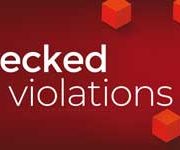Ossigeno. 423 Journalists threatened in Italy in 2017
Questo articolo è disponibile anche in:
Many episodes certified by the Observatory, which specifies: it is only 6% of the total. The names, the types of attack, the percentages. The alarm on Lazio
In 2017, Ossigeno per l’Informazione reported serious violations of freedom of information which happened in Italy through intimidation, threats, retaliation and abuses against 423 journalists, bloggers, photojournalists and video operators. This year the reporters affected are 11 more than 2016, 25% of which are women. Ossigeno published their names and described the unjustifiable attacks they suffered (see table).
Each of these information operators has been targeted to prevent them from freely gathering and disseminating news of public interest. The most prevalent type of attack was the warning (37%) followed by unfounded lawsuits and other spurious citations (32%). Other prevalent types were physical assaults (20%), actions to hinder the freedom of information in ways that could not be prosecuted by the law (7%) and damage to personal or corporate assets (4%).
Lazio was the Italian region where intimidations and retaliations ascertained were the most. In and around Rome, 141 journalists and bloggers were affected, 33% of the 423 encountered throughout the country. In Lazio there was an increase of 8 percentage points compared to 2016. This concentration of acts of intimidation and threats in the Capital and surrounding cities was reported by Ossigeno continuously from May onwards and reported in a dossier entitled “Alarm in Lazio” (read).
It is the first year since 2013 that the percentage of warnings exceeds that of spurious legal actions.
Ossigeno figures reflect the trend of acts of intimidation and threats implemented in Italy against journalists and describe in detail 6 percent of the phenomenon. In order to have a reliable estimate of the number of reporters actually affected by these violations during the year, it is therefore necessary to multiply the number of established cases by fifteen. Multiplying 423 by 15 gives 6435.
In 2017, Ossigeno was able to carefully check 216 different episodes (14 less than 2016). The number of those threatened is almost double the number of episodes examined because in 87 of these cases more people were targeted.
DB (gt)






Leave a Reply
Want to join the discussion?Feel free to contribute!